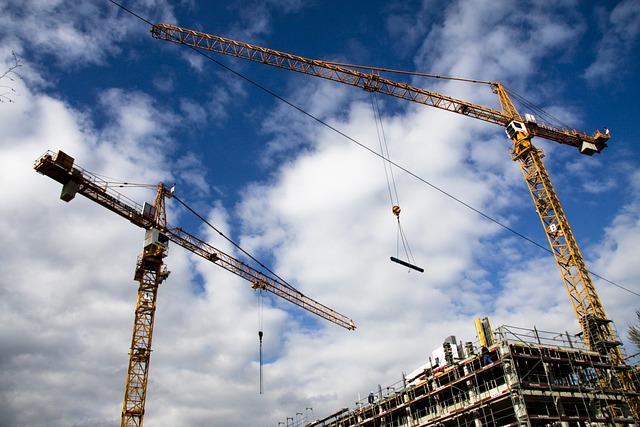In infrastructure management, reliable and accurate utility mapping services are crucial for safe and efficient operations. Professional utility mapping contractors use advanced technologies like GIS and 3D utility mapping to offer precise subsurface utility mapping, enhancing project outcomes, minimizing risks, and streamlining maintenance. Choosing the right contractor with expertise in both traditional and modern techniques ensures accurate utility mapping solutions, safe navigation around critical infrastructure, and efficient long-term asset management.
Reliable utility mapping is an indispensable component of modern infrastructure planning and maintenance. Accurate knowledge of underground utilities prevents costly disruptions during construction projects and ensures the safety of personnel and the public. This article explores the critical role of utility mapping services, comparing traditional to advanced techniques like GIS and 3D utility mapping. We delve into the benefits of professional utility mapping contractors in providing accurate subsurface utility mapping solutions for comprehensive infrastructure management.
Understanding the Importance of Reliable Utility Mapping
In the realm of infrastructure planning and maintenance, reliable utility mapping services play a pivotal role in ensuring safe, efficient, and sustainable operations. Professional utility mapping involves meticulous subsurface utility mapping to identify and locate critical utility lines such as water, gas, electricity, and telecommunications cables. Accurate utility mapping solutions are essential for navigating complex urban environments where these utilities are often intertwined, making precise planning and maintenance paramount.
GIS utility mapping and 3D utility mapping technologies have revolutionized the industry by providing detailed digital representations of underground infrastructure. These advanced tools enable utility line mapping that goes beyond simple documentation; they offer real-time data integration, visualization, and analysis capabilities. Engaging with reputable utility mapping contractors who specialize in these accurate mapping solutions can significantly enhance project outcomes, reduce risks associated with accidental damage to critical utilities, and streamline maintenance processes, ultimately fostering a robust infrastructure network.
Traditional vs. Advanced Mapping Techniques for Infrastructure Management
In the realm of infrastructure management, the evolution from traditional to advanced mapping techniques has revolutionized planning and maintenance. Traditional methods, often reliant on manual surveys and 2D drawings, were time-consuming and prone to errors. These techniques struggled to keep up with the dynamic nature of underground utilities, making asset management a complex task for contractors and utility companies.
Advanced mapping techniques, however, offer a game-changer in the form of accurate and comprehensive utility mapping services. Underground utility mapping using GIS (Geographic Information System) utility mapping and 3D utility mapping provides an all-encompassing view of the subsurface landscape. Professional utility mapping contractors utilize these cutting-edge solutions to deliver accurate utility mapping solutions, ensuring efficient infrastructure planning and maintenance. By identifying and visualizing utility lines, pipes, and cables accurately, these advanced methods streamline operations, reduce disruptions during construction, and enhance safety for workers and the public.
The Role of Technology in Enhancing Utility Mapping Accuracy
The advent of technology has significantly enhanced the accuracy and efficiency of utility mapping services. Professional utility mapping contractors now leverage advanced tools like GIS (Geographic Information System) utility mapping, which integrates geographical data with infrastructure information to create detailed digital maps. This allows for precise identification and documentation of underground utility lines, reducing errors commonly associated with manual methods.
Furthermore, 3D utility mapping has emerged as a game-changer, providing a comprehensive view of the subsurface landscape. By combining GPS technology, ground penetration radar, and other sensors, these solutions offer accurate utility line mapping, enabling better infrastructure planning and maintenance. This level of detail ensures that construction projects are informed by precise data, minimizing disruptions to critical services and facilitating more effective long-term asset management.
Choosing the Right Professional Utility Mapping Services
Choosing the right professional utility mapping services is paramount for accurate infrastructure planning and maintenance. Look for companies offering comprehensive solutions that combine advanced technologies like 3D utility mapping, GIS utility mapping, and subsurface utility mapping. These innovative methods ensure precise identification of underground utilities, reducing risks during construction projects and facilitating efficient maintenance.
When selecting a provider, verify their expertise in both traditional and modern mapping techniques. Reputable utility mapping contractors should provide detailed reports, offering not just the location but also the type and condition of utility lines. This level of accuracy is crucial for safe and effective navigation around critical infrastructure, ensuring projects are completed without disruptions or damage to essential services.
Reliable utility mapping is no longer a niche concern but a critical component of efficient infrastructure planning and maintenance. By adopting advanced mapping techniques like GIS, 3D modeling, and subsurface scanning, organizations can ensure accurate utility line mapping, enhancing safety and streamlining project management. When selecting utility mapping services, choosing professional contractors specializing in both traditional and modern methods ensures the best outcomes. These experts provide precise underground utility mapping solutions, enabling informed decision-making and reducing risks associated with critical infrastructure investments.
